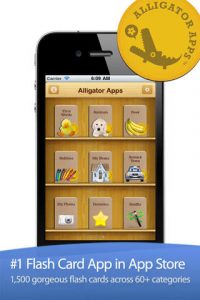
SLP-A & Speech Implementor Training- Logistics
Start Here
A note from the author
I’ve been in working in speech-language pathology since 2004 and I’m thrilled to be your guide throughout this Execution Plan.
While working in a hospital setting, schools, and private practice I’ve worked with children with all sorts of disorders, syndromes, and delays.
I have worked with speech implementors the past ten years and have developed our systems in such a way that folks without any background in communication disorders, special education, or even regular education can implement our plan and achieve successful outcomes with students.
Use what you learn in this Execution Plan to plan to have high-quality therapy sessions, effective communication with other IEP team members, and feel confident about your ability to help your students.
Ready?
Let’s get started!
Dan McCool
Owner/Speech-Language Pathologist
Ozark Therapy Institute, LLC
How to get the most from this execution plan
Here’s how to get the most out of the content in this Execution Plan,
- Read the entire EP once – Read through this entire EP, watch any videos and download the resources. Don’t execute on the steps until you have finished reading the entire EP. This will help you understand the progression of the steps and put them into context.
- Complete the steps – This Execution Plan is a checklist. Each step builds upon the next. Complete each step in order.
Lastly, here’s how to use the Execution Plan interface.
View the example Execution Plan below…
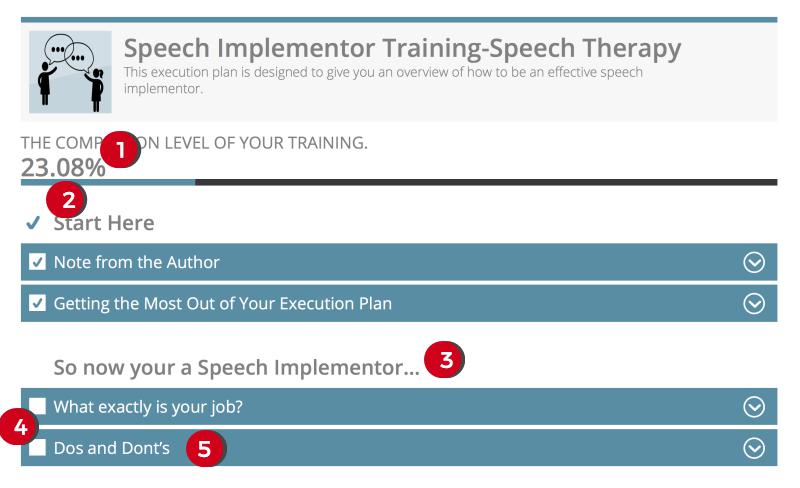
- Progress Bar – The Progress Bar shows you the percentage of the Execution Plan you have completed.
- Check boxes – Click the check box to indicate completion of a Course Step or Course Section.
- Course Sections – An Execution Plan is a series of steps that lead to the completion of milestones. In this EP there are four milestones entitled Start Here, Pre-Launch, Launch and Post-Launch.
- Course Steps – Each Course Section contains multiple steps.
- Arrows – Use the Arrow Buttons to open and close the Course Steps in the Execution Plan.
The Logistics of being a speech implementor in the schools
Meeting Attendance
Frequently, you as a speech implementor will attend IEP meetings and staffing on behalf of the speech-language pathologist. Your role at these meetings is limited. You may be asked to present the a student’s present level of functioning and recommended goals and therapy minutes at the IEP meeting- to do this you should read the written summary of that the SLP has added to the IEP.
If the rest of the team, including the parents, have questions regarding the child’s performance or the direction of therapy, it is best practice to defer to the SLP. At that time you should make note the the team’s questions/concerns and pass those along to the SLP with any relevant contact information.
Aside from recounting how the child has performed in therapy, you should refrain from vocally participating in the meeting. It is perfectly appropriate to tell the team that you “do not know” the answers or that you will “pass along” the issues that were raised by the team.
If you think a meeting will be confrontational, please share that with the SLP. If it is possible the SLP will try to participate via phone, video conference, or rearrange schedules to participate in person.
The SLP should always be a participant in eligibility meetings, the presentation of evaluations, and the development of an initial IEPs.
Scheduling Students
How To Schedule Students for therapy:
- Get a school schedule (this will provide you with times for each grades specials, lunch, and recess)
- Get a list of students needing services (Special Education Director should be able to provide this)
- Find the teachers for those students
- Distribute scheduling request form to those teachers
- (To make it easier for teachers, jot down the day(s) of the week that you will be in the district providing services. Also, make a note of the students times for specials, lunch and recess on the form to make sure the student(s) is not scheduled during those times.)
- Using an open manila folder create a table with times (8am-3pm, on every half hour) and days of the week. (See picture for example)
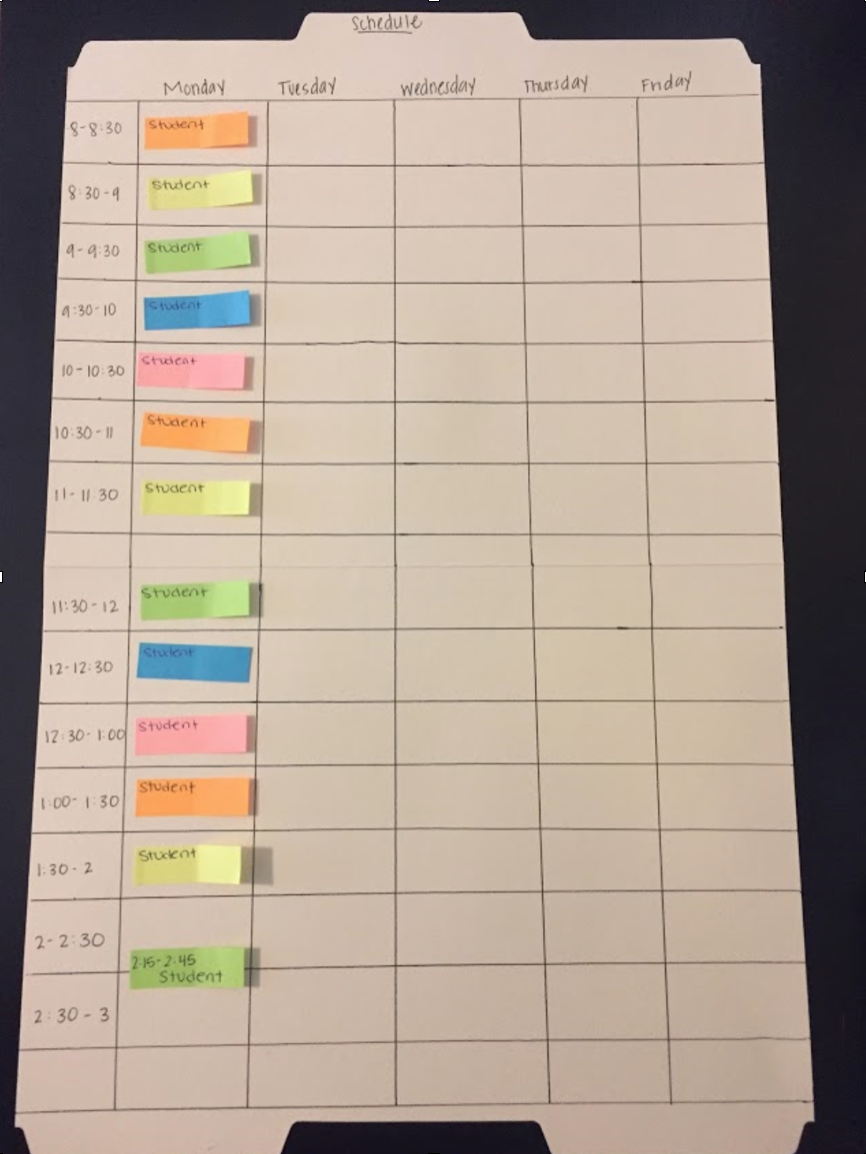
~Write each students name down on a sticky note tab. Collect scheduling request forms from teachers and use sticky tabs to plug in each student in a time slot that works for them.
~Adjust and move students on the schedule as needed with times that work as you go through your caseload. (It’s OK to schedule students on the quarter hour as well!)
~Once you have a tentative schedule created on the manila folder with each student you can type it out into a more formal schedule that can be emailed out to teachers and case managers.
Scheduling IEP meetings and weekly consults
Scheduling IEP meetings
Scheduling to Evaluation/RED/IEP meetings can be handled by a variety of people in the school district. If it is your responsibility to scheduled these meetings, there are a few things to remember:
- The meetings need to be scheduled to take place at least 20 days before the meeting is due. According to DESE, “State regulations require the public agency (school district) to make two attempts to convince the parent to attend a meeting before they hold the meeting without the parent in attendance. On each attempt, the agency must provide the parent with at least ten (10) calendar days prior notification unless the parent agrees to hold the meeting sooner.”
- When scheduling the meeting direct contact must be made with the parent. Direct contact is: phone contact, face-to-face contact, and/or US mail. A direct contact is not: fax, voice mail, email, text message, hand carried by student, or answering machine.
- Written “Notice of Meeting” should be delivered to all meeting participants.
For more information on scheduling meetings to fit within DESE guidelines and facilitate parent participation visit the DESE website.
Scheduling Weekly Consult Meetings
Weekly consults with the SLP, are not optional but are a necessary components in the Ozark Therapy Implementor Supervision System. The method meeting can take several forms. It can happen in person, as a video conference, or phone call. If the implementor has a full caseload of students, approximately 1 hour should be allotted each week for consultation. If an implementor has less than a full caseload, the time for meeting may be adjusted accordingly.
It is usually easiest to have the weekly consult on the same day, at the same time each week. If a meeting is missed due to unforeseen circumstances it should be made up as soon as possible, but no later than 1 week after it was originally scheduled.
Group Management
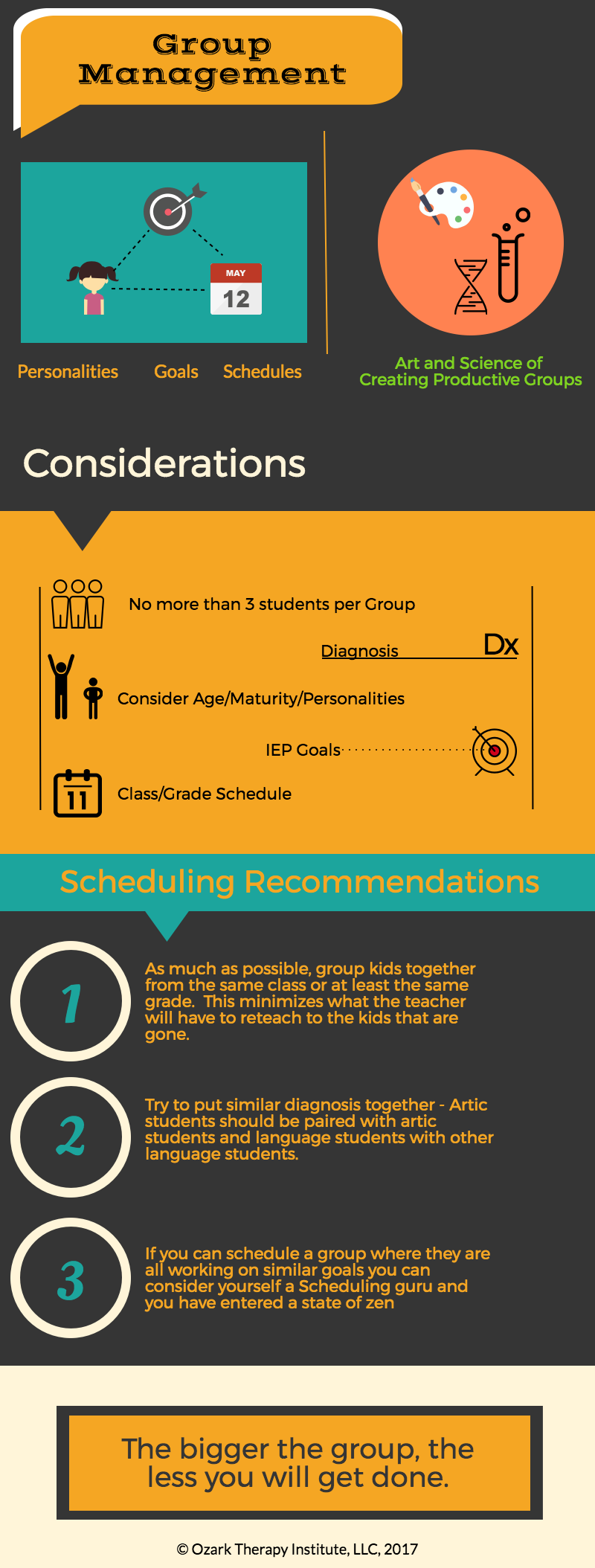
Establishing Routine
You will find that therapy is more productive and effective by establishing a routine (i.e. system) in your therapy session. It is not so important what your routine is, but that you have a routine and that the students know and follow it.
Here is why you need a routine (system).
- Routines are emotional regulators for young children.
- Routines also help to decrease conflict.
- Routines guide positive behaviours and safety.
- Routines and rituals guide social development.
- Routines ease transitions for children.
- Routines keep you on track with therapy (and prevent becoming bogged down with a particular activity).
- Routines provide predictability. Predictability allows students to become comfortable and thrive academically because they are not distract by “What’s coming next?”
Example:
- As you pick the student up from class ask them (every time), why they come to see you [It is IMPORTANT that they know what they are working on]
- When you enter the room, show them a table that has 2-3 activities that they will be doing during the therapy session.
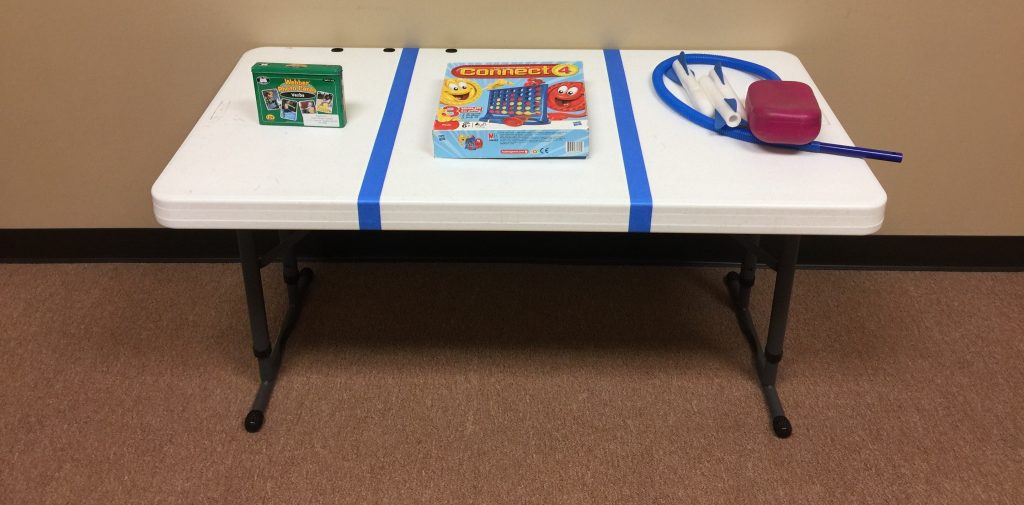
3. Point to each activity and say “number 1…2…3…” and they will name the activity.
4. Perform each activity in order.- When you lay out a game (like Connect Four) you use that game as a means of addressing the goal.
[As a side note, it is often a good idea to put the most motivating activity at the end. This way, you can keep telling them that you really want to play with #3, but first you have to finish activity #1 and #2]
5. At the end of the session, the students clean up and return to class.
*Note that in the above routine, if a child is having a difficulty time with a goal being addressed or you have a time issue, you can shorten or lengthen the duration of the activity.
You will need to walk the kids through the routine step-by-step for the first several therapy sessions. After that, it should just become “the way we do it.”
Tools/Resources
Here are a few of our favorite Apps, Tools, and Resources:
iPad resources
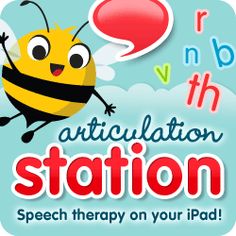 Articulation Station
Articulation Station
This is my go-to app for articulation. The reason- I can easily get 150 productions in a 30 minute session and it tracks the student’s performance for me. The free version is pretty worthless, but the “Pro” version is a bargain at $60. (If it were 2x this price I would gladly pay it because I find it so useful.)
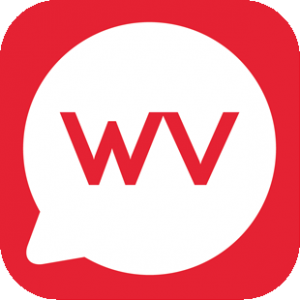 Word Vault Essential-
Word Vault Essential-
The “Essential” Version is good and FREE. If you decide to shell out the $55.00 for the “Pro” Version of the app you quadruple it’s usefulness. This app has different components that will help you address articulation, phonology, Langauge, and Social-interaction skills. I recommend trying the free version, and if you love it, upgrade to “Pro.”
My First 1,000 Words – Flashcards and Kids Games By Innovative Mobile Apps
I use this App all the time to work on vocabulary- naming common objects, actions, shapes, etc. It’s also handy because you can take pictures of objects and people the students see everyday and incorporate those pictures into therapy. I also use these stimulus pictures to elicit longer utterances and pose wh-questions.
Board Games and Flash Cards:
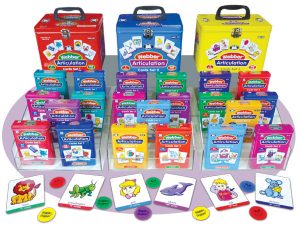 Articulation Cards-
Articulation Cards-
These are classic. If you are working on articulation or phonology, you really can’t go wrong with these cards.
Many of the familiar board games are perfect for keeping the kids motivated and engaged while providing lots of opportunities to work on their targeted goals. These include:
- Sorry
- Trouble
- Aggravation
- Connect 4
- Candy Land
- Jenga
- Battleship
- Chutes and Ladders
- UNO
- Pik-up-stiks
- Memory Match
- Mr. Mouth
- Operation
